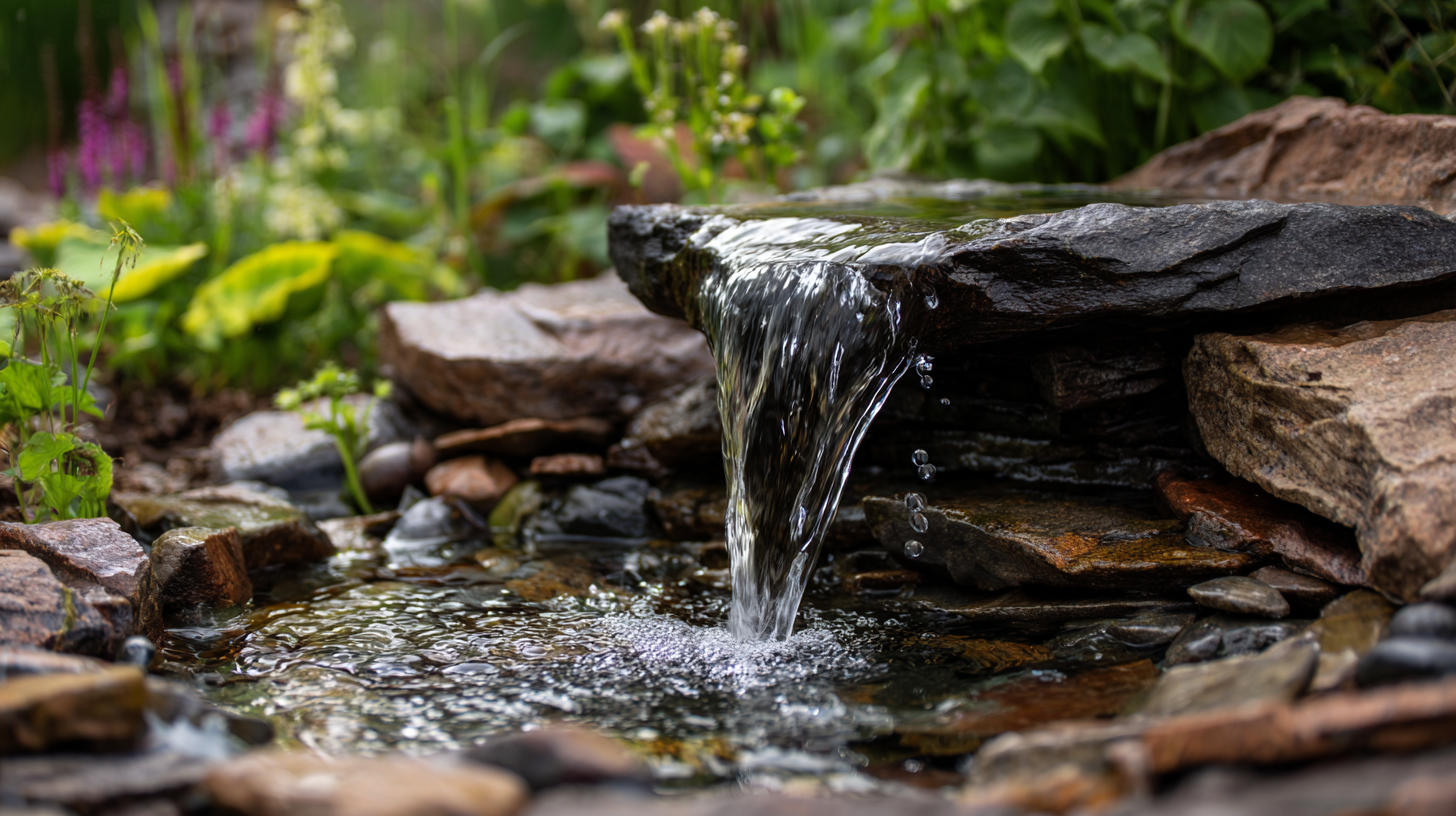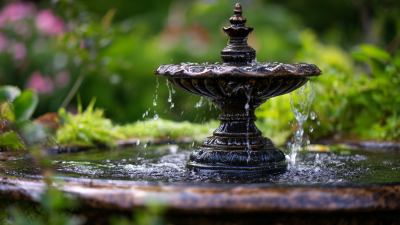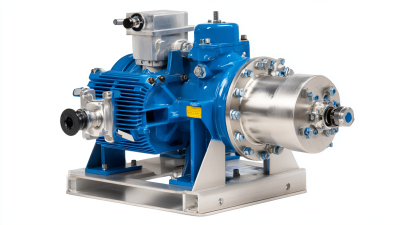7 Expert Tips to Choose the Best Fountain Pump for Your Garden Water Feature
When it comes to enhancing your garden with a stunning water feature, selecting the right fountain pump is crucial to ensuring its beauty and functionality. A fountain pump serves as the heart of your water display, providing the necessary circulation and movement to keep the water flowing and the aesthetics captivating. However, with a plethora of options available on the market, choosing the ideal fountain pump can become overwhelming. To aid you in this process, we present seven expert tips that will guide you in selecting the best fountain pump for your specific needs. From understanding the flow rate to considering energy efficiency, these tips will help you navigate the intricacies of fountain pump selection, ensuring that your garden water feature not only flourishes but also offers a peaceful retreat for you and your guests.

Understanding the Different Types of Fountain Pumps for Garden Water Features
When selecting the right fountain pump for your garden water feature, it's crucial to understand the various types available. Typically, fountain pumps are categorized into submersible and inline pumps. Submersible pumps, often favored for their ease of installation and quiet operation, can be placed directly in the water. According to the American Society of Landscape Architects, about 70% of homeowners with garden water features opt for submersible pumps due to their efficiency in maintaining water circulation without the need for extensive external plumbing.
On the other hand, inline pumps are usually installed above the water surface and are better suited for larger fountains or those requiring higher flow rates. Reports from the Pump and Motor Company indicate that inline pumps can sustain flow rates exceeding 4000 gallons per hour, making them ideal for more ambitious landscape designs. Each type has its advantages and considerations, such as energy consumption and maintenance requirements. Therefore, assessing the specific needs of your garden feature is vital for ensuring optimal performance and longevity from your chosen pump.
Key Factors to Consider When Selecting a Fountain Pump for Your Garden
When selecting a fountain pump for your garden, there are several key factors to consider to ensure optimal performance and longevity. First and foremost, you should assess the size of your water feature. The pump must be powerful enough to circulate the water efficiently, taking into account the height and width of the fountain. A pump that’s too weak will result in inadequate water movement, while one that’s too strong can create excessive splashing.
Another significant factor is the pump’s flow rate. This refers to the amount of water the pump can move within a certain timeframe, typically measured in gallons per hour (GPH). Most fountains require a flow rate of 300 to 600 GPH, but this can vary based on the fountain’s design. Always check the manufacturer's specifications to match the pump's flow rate to your fountain’s needs.
Additionally, consider the energy efficiency of the pump. A pump that consumes less energy can significantly reduce operational costs over time. Look for pumps with high energy efficiency ratings and features like adjustable flow controls, allowing you to personalize the water flow as seasons change. This not only enhances the aesthetics of your water feature but can also prolong the lifespan of your pump.

How to Determine the Right Flow Rate for Your Fountain Pump
When selecting the best fountain pump for your garden water feature, understanding the right flow rate is crucial. The flow rate, measured in gallons per hour (GPH), dictates how effectively water circulates through your fountain, influencing not just aesthetics but also the health of any aquatic life and plants. According to the National Gardening Association, a well-designed water feature should achieve a flow rate that circulates the entire volume of water in the pond or fountain about once every hour.
One of the main factors to consider when calculating the correct flow rate is the size of your fountain. A general rule of thumb is to choose a pump that can move at least half the volume of water in your feature per hour. For instance, if you have a 200-gallon pond, look for a pump with a minimum flow rate of 100 GPH. For larger or more intricate water features, you may require a higher flow rate to ensure proper water movement and to avoid stagnation.
Furthermore, take into account the height to which the water will be pumped. This is often referred to as the "head height," and it impacts the actual flow rate. Manufacturers typically provide flow rate specifications at various head heights, which can help you determine the pump's efficiency in your specific setup. For best results, always consult the pump's product data to ensure compatibility with your fountain's design.
7 Expert Tips to Choose the Best Fountain Pump for Your Garden Water Feature
| Tip | Description | Recommended Flow Rate (GPH) | Pump Power (W) | Best for |
|---|---|---|---|---|
| 1. Assess Your Feature Size | Determine the size of your water feature to select a pump with adequate flow. | 100 - 200 GPH | 20 - 40 W | Small Fountains |
| 2. Check the Height of the Fountain | Consider how high the water needs to be lifted to flow properly. | 200 - 400 GPH | 40 - 80 W | Medium Fountains |
| 3. Determine Flow Rate Needs | Different designs require different flow rates; calculate based on volume. | 400 - 600 GPH | 80 - 120 W | Large Fountains |
| 4. Consider Pump Type | Choose between submersible and external pumps based on your setup. | 500 - 800 GPH | 120 - 200 W | Ponds & Waterfalls |
| 5. Evaluate Energy Efficiency | Look for energy-efficient models that save on electricity costs. | 300 - 500 GPH | 30 - 60 W | All Features |
| 6. Plan for Maintenance | Select pumps that are easy to clean and maintain. | 200 - 400 GPH | 40 - 80 W | Moderate Use Fountains |
| 7. Read Reviews & Ratings | Research customer feedback to find reliable options. | Variable | Variable | All Types |
Assessing the Power Source Options for Your Garden Fountain Pump
When selecting a fountain pump for your garden water feature, assessing the power source options is crucial for ensuring optimal performance and longevity. The two primary power sources for fountain pumps are electric and solar.
Electric pumps typically offer higher performance and reliability, making them suitable for larger fountains or those requiring a consistent water flow. However, they do require access to a nearby electrical outlet, which can limit placement options. Additionally, users should consider weatherproofing measures to protect exposed electrical components from the elements.
On the other hand, solar-powered pumps present an eco-friendly, energy-efficient alternative. They are easy to install and maintain, as they do not require electrical wiring. Ideal for smaller water features, solar pumps operate effectively in sunny locations but may struggle in shaded areas or during cloudy days. Before committing to a power source, one must evaluate the specific needs of the fountain, including its size, design, and location, as well as the availability of sunlight or electrical outlets. This careful consideration ensures your garden fountain operates seamlessly and enhances your outdoor space.
Maintenance Tips for Ensuring Long-Lasting Performance of Your Fountain Pump
Maintaining your fountain pump is essential for ensuring its longevity and optimal performance. Regular cleaning is the first step in maintenance; debris such as leaves and dirt can easily clog the pump and reduce its efficiency. It’s advisable to clean the pump at least once a month, especially during the fall when leaves are more likely to accumulate. Additionally, inspect the filter screen for any blockages and replace it if it appears damaged or heavily soiled.
Another crucial aspect of maintenance is monitoring the water level in your fountain. The pump should always be submerged in water to prevent it from running dry, which can lead to overheating and permanent damage. Check the water level regularly, particularly during hot weather when evaporation rates increase. Furthermore, ensure that the electrical connections and cords remain intact and free from water exposure to avoid potential hazards. By following these maintenance tips, you can extend the lifespan of your fountain pump and keep your garden water feature looking stunning year-round.

Related Posts
-

7 Incredible Benefits of Using Fountain Pumps for Your Water Features
-

What to Know About Diaphragm Vacuum Pumps: A Comprehensive Guide for Global Buyers
-

7 Essential Tips for Choosing the Right Diaphragm Pump for Your Needs
-

Ultimate Guide to Choosing the Best 12 Volt Sprayer Pump for Your Agricultural Needs
-

7 Essential Tips for Choosing the Best Electric Water Pump for Your Needs
-

Troubleshooting Issues with Dual Diaphragm Pumps for Optimal Performance